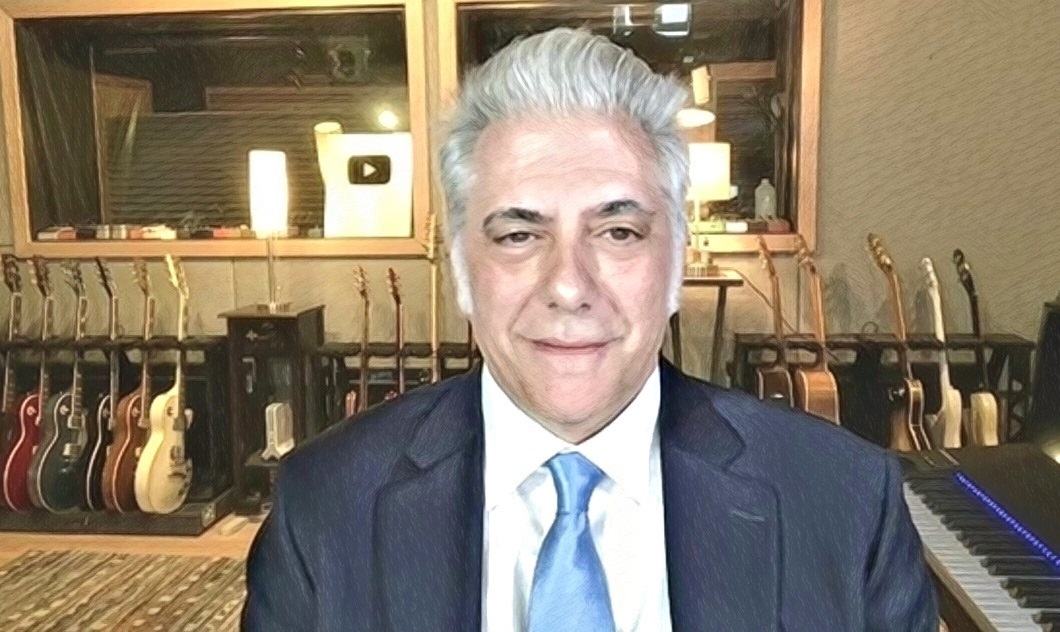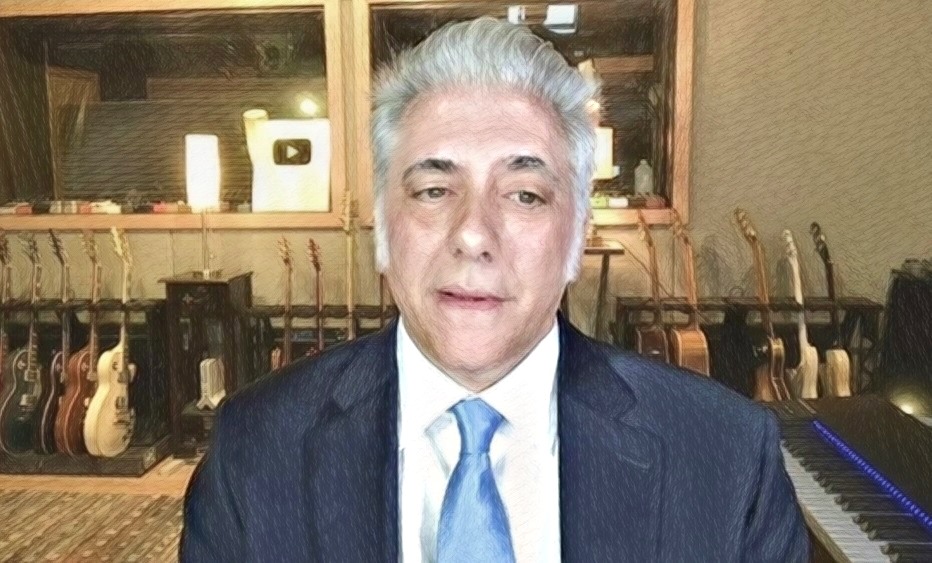
|
Rick Beato Statement to a Senate Judiciary Subcommittee on Intellectual Property re Music Education, Fair Use and YouTube delivered 28 July 2020, Dirksen Senate Office Building 226, Washington, D.C.
[AUTHENTICITY CERTIFIED: Text version below transcribed directly from audio] Chairman Tillis, Senator Coons, and Members of the Subcommittee: I thank you for inviting me to participate in todayís hearing. My name is Rick Beato. I've been asked to come here today and discuss the issue of fair use related to my work as a content creator on YouTube.
For four years, I've developed an educational YouTube channel I call "Everything Music." In this time, I've steadily built an international audience of 1.7 million subscribers and my channel has had over 200 million views.1 I've created 750 videos on topics ranging from music theory, ear training and improvisation, to film scoring, production, copyright, interviews, and a series of 94 videos entitled "What Makes This Song Great?" In this series, I explore the individual elements of famous songs, examining the melodic and harmonic structure of its production technique2 to answer the question of what actually makes a song great. When I began the series, I uploaded the episodes knowing that the videos would be instantly recognized by YouTubeís Content ID algorithm and demonetized. A demonetized video means that the artist or copyright holder receives all the ad revenue generated from the video that would normally go to the content creator. Some artists, like the Eagles, Jimi Hendrix, and Guns N' Roses, are what I refer to as "blockers." Blockers are artists who have a "zero use" policy for any of their work, regardless of the length or purpose of the excerpt. I've never fought -- I've never sought to claim fair use for any of these videos, even though a case could be made that I was providing education through commentary, criticism, research, and teaching based on the fair use policy defined by U.S. law. From 1987 to 1992, I was an Associate Professor of Music at Ithaca College. In those days, as it is today, the use of recorded music for analysis in classroom instruction was commonly used and protected under fair use. YouTube, in many ways, is the new university. It's the place where people go to learn things: the do-it-yourselfers who want to fix their hot water heater; consumers who want to compare cameras; or students who simply want to learn how to play a song. In my view, this is the most important function of YouTube. As a songwriter, Iíve been signed to multiple publishing deals since 1992 -- 1992, most recently with Sony ATV. Iíve had songs as a writer on many records, including a No. 1, million-selling Country song as recently as 2013. Out of my 750 YouTube videos, 254 have been demonetized and 43 have been blocked or taken down. For the record, I've never had a copyright strike filed against me by YouTube.3 This brings me back to fair use. Two elements of fair use that I believe covers teaching videos have to do with the amount of the copyright[ed] material used and whether or not it harms the copyright holder's ability to profit from their original work. I would argue that if a video using a brief excerpt of music to demonstrate a compositional/production technique, [it] should be covered by -- under the fair use guidelines. The rules governing the application and interpretation of fair use should be shouldered by all parties, not only the content creator. The concept of fair use is meaningless when frivolous or random interpretations allow a team of "searchers," typically employed by a major label, harass creators for content that falls under the legal definition of fair use. Now, a clear-cut case of [music] piracy is one thing, but there have to be examples -- have to be exemptions for fair use. One of my recent music theory videos called "The Mixolydian Mode" was manually claimed by Sony ATV because I played ten seconds of a Beatles song on my acoustic guitar to demonstrate how the melody is derived from this scale. This is an obvious example of fair use, I would argue. In response, I made a video entitled "The Music Industry SCAM to Ripoff YouTubers." The videos [sic] describes how record labels employ "content ID farms," essentially collection agencies, to manually claim YouTube videos for demonetization. Don Henley testified to this before this very Committee. My video received over half a million views within 24 hours and the claim was then released by Sony without me even -- even filing a dispute. I believe the claim was released because I have a channel of over a million and a half subscribers and hence have a platform to air these grievances. Creators with smaller audiences are not so fortunate. I accepted the invitation to testify today because we need to find solutions to these problems. In the case of fair use, content creators should be protected from frivolous demonetizations. I'd like to propose what I would call a "Fair Use Registry" where one could get a certification as a good actor similar to Twitter's blue checkmark.3 When a video is posted, it can be checked against a database of certified fair users. The content creator would be then whitelisted for use. YouTube already sets benchmarks for channel monetization. The Fair Use Registry would work along the same lines. The reason I create videos, such as mine in the "What Makes This Song Great?" series, is to introduce classic songs to new audiences, and reinvigorate the same old -- or -- same songs to older fans. Thank you so much for your time. I'd be happy to answer any questions you have.
Senator Thom Tillis: Mr. Beato, I want to come back to you. I think you said in your opening testimony that you have not sent a counter-notice [to a YouTube copyright notice]. Correct me if I'm wrong. But tell me -- if...that is correct -- tell me why. And I'm also kind of curious as to whether or not counter-notices are...they even work in a situation like YouTube's Content ID, where copyright owners choose to monetize rather than take down [infringing video content]. Can you expand on that?
Mr. Rick Beato: Well, there's a couple different issues. If you have a large YouTube channel, there are people that work for these content -- content ID, you know...if you're Warner Music Group or Universal Music Group. They go after, typically, big YouTube channels because they're easy to find, if you reference an artist or you play some music, no matter what it is. And they just will gratuitously -- not all the time -- but they'll go -- go after people like that and just claim something. And then, you have to -- you have the burden of fighting that. And it's very difficult to prove fair use; even though the example of where I gave where I played a Beatle's melody -- physically, I just played it on the guitar -- and said this is a demonstration of this scale. Obviously, the video's not on the Beatles; its on the Mixolydian mode, which is a scale I was using to teach. Well, how can a computer differentiate that, you know, that that's a fair use -- that that's...fair use versus me actually playing the song, a segment of it to, you know, for...another reason that's obviously not fair use? I've never -- I've never done anything related to copyright as far as claimed -- I've never disputed anything. But I do make videos related to them and the videos will get a lot of views. And then many times the [YouTube copyright] blocks will get released or -- you know, because I have a big channel. And they -- when people see a video with 500,000 views in a day, and I'm talking about a particular artist, those companies see that [large number of video views ] and they remove the claim. I don't do anything about that. But the -- the idea that when Don Henley said on here they have 60 people working full time doing this,4 you have to realize that most of the -- of YouTube is not seen by the general public. Yes, you can search a song, "Hotel California," it will bring up results but that's very easy for them to filter that, for YouTube to do that. Content ID claims on an uploaded video -- they come instantly. I get them right in my -- in my email. As soon as the video is uploaded, all of them appear, if there's anything in there, any type of Content ID. I never -- I rarely have a thing where it doesn't catch -- catch the thing. So -- But I never try to claim fair use. To me, it's just a waste of my time, honestly, because I don't think...I just don't think it's worth -- worth the trouble to do it. Senator Thom Tillis: Seems like you've come up with an interesting way without doing that. [A Fair Use Registry] 1 These figures have risen significantly since the statement delivered above. See here for current subscriber and video view counts. 2 .Mr. Beato's written testimony here reads "...I explore the individual elements of famous songs, examining the melodic and harmonic structure along with its production technique...." [emphasis added] which seems a more accurate phrasing, as a song's musical elements is conceptually distinct from its production. 3 The analogy -- a blue checkmark is to Twitter as a Fair Use Registry is to YouTube -- relatively apt at the time, has lost its explanatory force given Twitter's name change to "X" and, more centrally, its recent (and likely ongoing) policy changes to its verification system. 4 From Mr. Henley's Senate subcommittee testimony of 2 June 2020: "Universal Music Group administrates the publishing for the Eagles and for myself and they have a team of 60 people, 60 people who sit in a room with computers, and all they do all day long, five days a week, sometimes 6 days a week, is deal with the platforms such as YouTube and Facebook. They file claims and they issue take-down notices for the Eagles and for myself. And those amount to between 200 and 500 claims a week." [Source: https://www.c-span.org/video/?472616-1/senate-hearing-copyright-law (as transcribed, beg. 49:29)] Original Text, Audio, Video Testimony Images (Enhanced Screenshots) Source: judiciary.senate.gov
Original Image of Mr. Beato's YouTube
Channel Banner Source: YouTube.com
Text Note: Supplemental transcription work by Michael E.
Eidenmuller
Audio Note 1:
Audio/Video of proceedings edited to
include only Mr. Beato's (and briefly Senator Tillis') remarks
Audio Note 2: Digital reverb occurring between 00:01-1:27 and
5:41-8:13 (pre)imprinted at source
Audio Note 3: AR audio post production for clarity -- corrective EQ, light chorus, stereo widening -- by Michael E. Eidenmuller.
Image Note: Screenshots and digital enhancements of speaker by
Michael E. Eidenmuller
Page Updated: 9/16/23 U.S. Copyright Status: This text = Property of AmericanRhetoric.com.. Audio and Images = Fair Use. |
|
|
© Copyright 2001-Present. |


